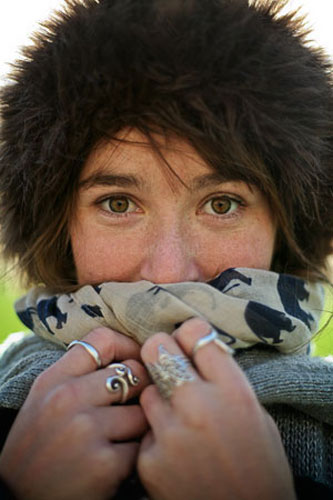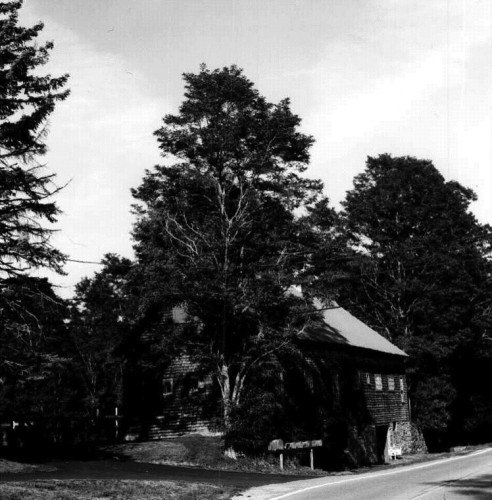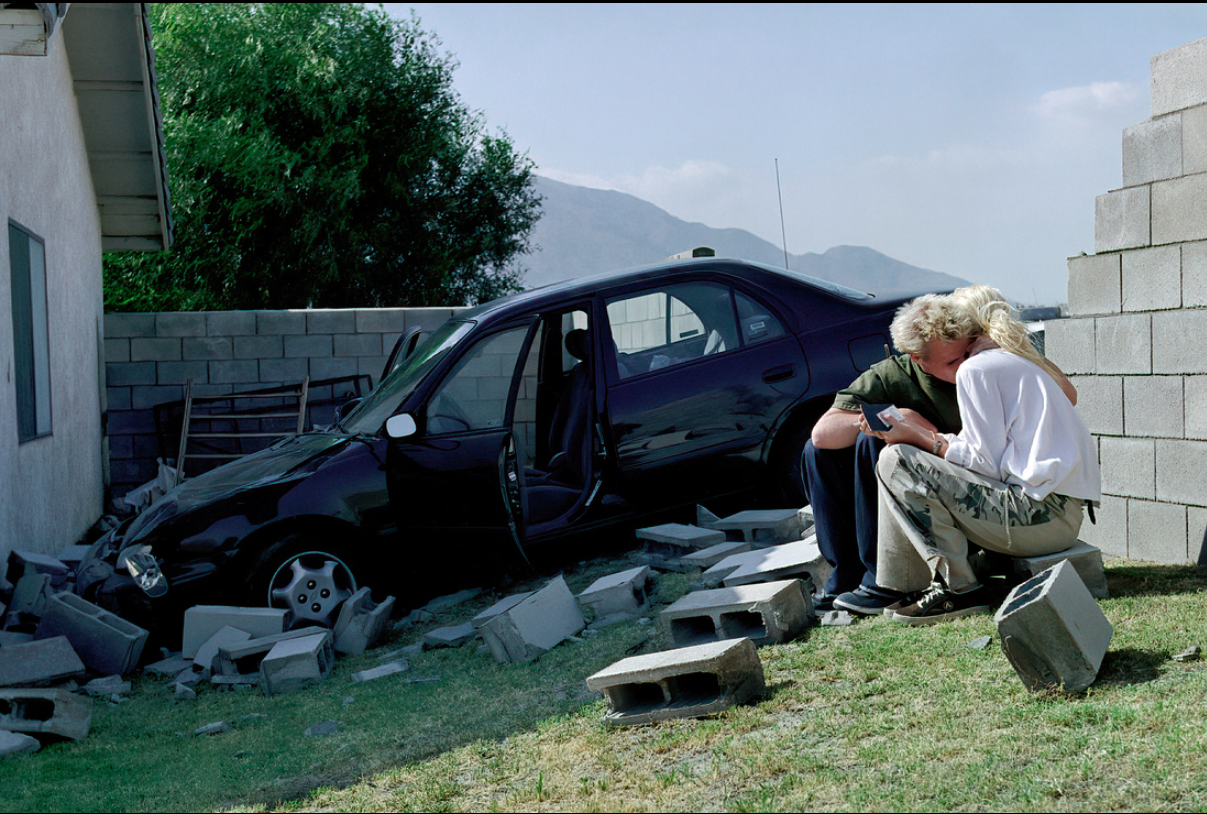Latest Posts › Photography Forums › General Photo Chit Chat › Photography Throwdowns › THROWDOWN: Metering with your eyes
- This topic has 11 replies, 6 voices, and was last updated 9y, 12mo ago by
 Michael Lloyd.
Michael Lloyd.
-
AuthorPosts
-
-
May 3, 2014 at 3:56 pm #133804
In two parts:
1. Practice setting your exposure manually using the ‘Sunny 16 Rule’.
2. Pre-plan a shoot in natural light by calculating the exposure you anticipate and settings you will use.
For instance – I might want to shoot a portrait in open shade with a brighter area in the background using a wide aperture to achieve a shallow depth of field.
This is a scenario that would potentially produce a false reading from my camera’s meter and result in an underexposed subject.
Using the ‘Sunny 16 Rule’ could help me get the correct exposure (of course there are other solutions like spot metering but I maintain that this is a useful exercise).
When I was about 14 my father handed me an old camera, without a meter, and a roll of Kodak Plus-X.
Inside the box of Plus-X there was a graphic chart showing the correct exposure for a selection of outdoor lighting levels.
The chart is based on the idea that if you match the shutter speed to the ISO you can calculate the required f-stop by evaluating the light level in the scene.
So if your shutter speed is set to 125th of a second and your ISO is set to 125 then –
f/16 for bright sunny scenes with sharp edged shadows.
f/11 for hazy sunlight with soft edged shadows.
f/8 for cloudy but bright scenes with indistinct shadows.
f/5.6 for heavily overcast scenes without shadows.
f/4 for open shade.
Learning to use the chart and then also learning to adjust the exposure to achieve the specific aperture or shutter speed I might require provided a solid grounding in the relationship between aperture, shutter speed and ISO that has served me well for 30 years in photography.
So for my example above, shooting a portrait in open shade with a bright background I might try setting the ISO to 160, the shutter speed to 1/160th and the aperture to f/4.
The result will be a well-exposed portrait with a bright and blurry background.
That basic setup is the basis of a lot of professional headshots and outdoor fashion work.
Frequently the open shade will be created by suspending a large diffuser over the model but you can use the shadow of buildings as well by composing so the background is an area outside of the shadow.
Modern cameras with their sophisticated metering systems do a pretty good job of getting a useable exposure most of the time but learning to ‘read’ the light in this way can help you develop as a creative photographer.
For one thing it is a good way of getting to grips with the relationship between aperture, shutter speed and ISO.
It’s also a good exercise in ‘really seeing’ what type of light you’re dealing with and starting to associate the quality of the light with the type of results you can expect.
-
May 5, 2014 at 2:12 am #134050
Excellent post, @aarongeis. I’ve almost always depended on the built in metering but as you said, this is a handy way to “read” the light and get a better understanding of outdoor lighting. I’m definitely going to put it to practice soon. 🙂 Thanks for sharing!
-
May 5, 2014 at 7:47 am #134106
So glad you like my post, thanks for taking the time to read it!
Look forward to seeing your results.
-
May 5, 2014 at 8:24 am #134107
Yes @aarongeis very good. Very good advice to keep in mind especially to find a starting point then make minor adjustments from there. I use the metering in camera as a guide only, because it is not always right.
Although almost every time I start a shoot wherever I am I automatically think “what am I shooting”? And start my settings from there! And try not to forget the light is usually changing all the time, so keep an eye on it and make changes when needed. Don’t get stuck on a particular setting.
1. Action=Set required shutter speed first. Adjust iso & apert. from there.
2. Low light=Set iso settings and/or aperture first. Set shut sp. etc.
3. Dof, low light=Set aperture first.
I know I’m stating the obvious but good for everyone to keep in mind.
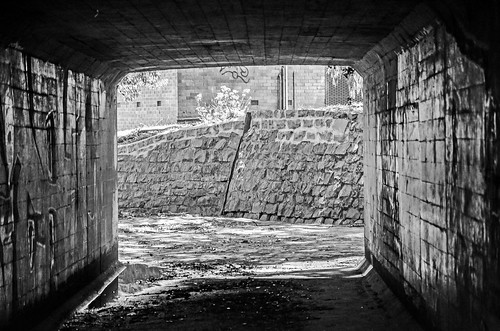
-
May 5, 2014 at 9:26 am #134114
Thanks @silverbells,
In practice I pull out my Sekonic meter whenever I’m doing something for professional or portfolio purposes.
When I’m doing street photography or holiday shots I usually go with Aperture Priority but I’m also thinking – what would the ‘Sunny 16’ be?
Sometimes the ‘Sunny 16’ produces are more interesting looking result or guides me to using exposure compensation with the auto setting.
And for me the most important aspect is how the exercise trained me to be thinking ‘there are hard shadows now so I need to look for a source of fill or some open shade’, or that ‘the light is getting a bit flat, what can I do to add drama’.
My observation of doing walkabouts with students is they become so dependent on their camera’s meter that they’re not really thinking about the light they’re looking at.
I thought the way my father taught me worked pretty well so I pass it along whenever I can.
-
May 5, 2014 at 11:06 pm #134279
@aarongeis Yes, getting people actually “thinking” instead of relying on automated meters etc. The end result may be almost the same most times but it is the one time it’s not that counts. And as you say there’s shadows in different areas you need to allow for.
These days when you can keep an eye on what you are shooting instantly is so much easier. Even if you didn’t want to think too much to start with, just take a shot and adjust from there, in three shots or less you have the results you want. But you need to know what you want first.
So so much easier than film!

-
May 6, 2014 at 11:48 am #134361
 Richard WoodParticipant
Richard WoodParticipant- Allows Edits: Yes
@camerasinger- Posts:2229
No Achievements Yet!
Allows Edits? YesThis was taken about 20 years ago with a vintage 120 folder (Agfa Isolette II), So I don’t remember the settings, but I did use the sunny 16 rule to set my aperture and shutter. I going to guess that I used f/11 and 1/250 with 100 Iso film.
-
May 6, 2014 at 11:19 pm #134429
This is great info! I always use my in-camera meter and take a few shots but I would love to be able to “read” a scene. Now, I wonder how many times I’ll have to re-read this post before it all sticks in my brain…… lolll
-
May 7, 2014 at 5:35 am #134479
I hesitate to post anything appropriated from the internet or that would be copyrighted in any way but it would be possible to enter something like ‘Sunny 16 chart’ into a search engine and come up with a few graphic charts that could be printed and kept in your camera bag or wallet – a good use for a home laminator if ever there was one.
It starts with looking at the type of shadows you’re seeing.
Here are a couple of quickie example shots taken when the sun was going in and out of the clouds.
 F/16 example by Aaron Geis on Light Stalking
F/16 example by Aaron Geis on Light Stalkingf/16 | 160th | ISO 160
 F/11 example by Aaron Geis on Light Stalking
F/11 example by Aaron Geis on Light Stalkingf/11 | 160th | ISO 160
 f/8 example by Aaron Geis on Light Stalking
f/8 example by Aaron Geis on Light Stalkingf/8 | 160th | ISO 160
-
May 10, 2014 at 10:59 pm #135156
 Richard WoodParticipant
Richard WoodParticipant- Allows Edits: Yes
@camerasinger- Posts:2229
No Achievements Yet!
Allows Edits? YesHere’s a good simple reference:
http://fotoprofessor.files.wordpress.com/2008/02/sunny16rule.pdf
-
May 11, 2014 at 5:10 am #135199
@camerasinger Thanks for adding that link!
-
May 12, 2014 at 8:02 pm #135420
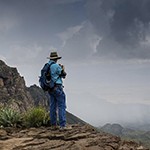 Michael LloydParticipant
Michael LloydParticipant- Allows Edits: No
@michael-lloyd- Posts:1301
No Achievements Yet!
Allows Edits? NoI’ve got a Voightlander Prominent that doesn’t leave me much choice. I’m about 1/2 way through a roll of Ilford 50. I guess I need to finish the roll and post something. I hope the exif comes through this time :o)
-
-
AuthorPosts
- You must be logged in to reply to this topic.
